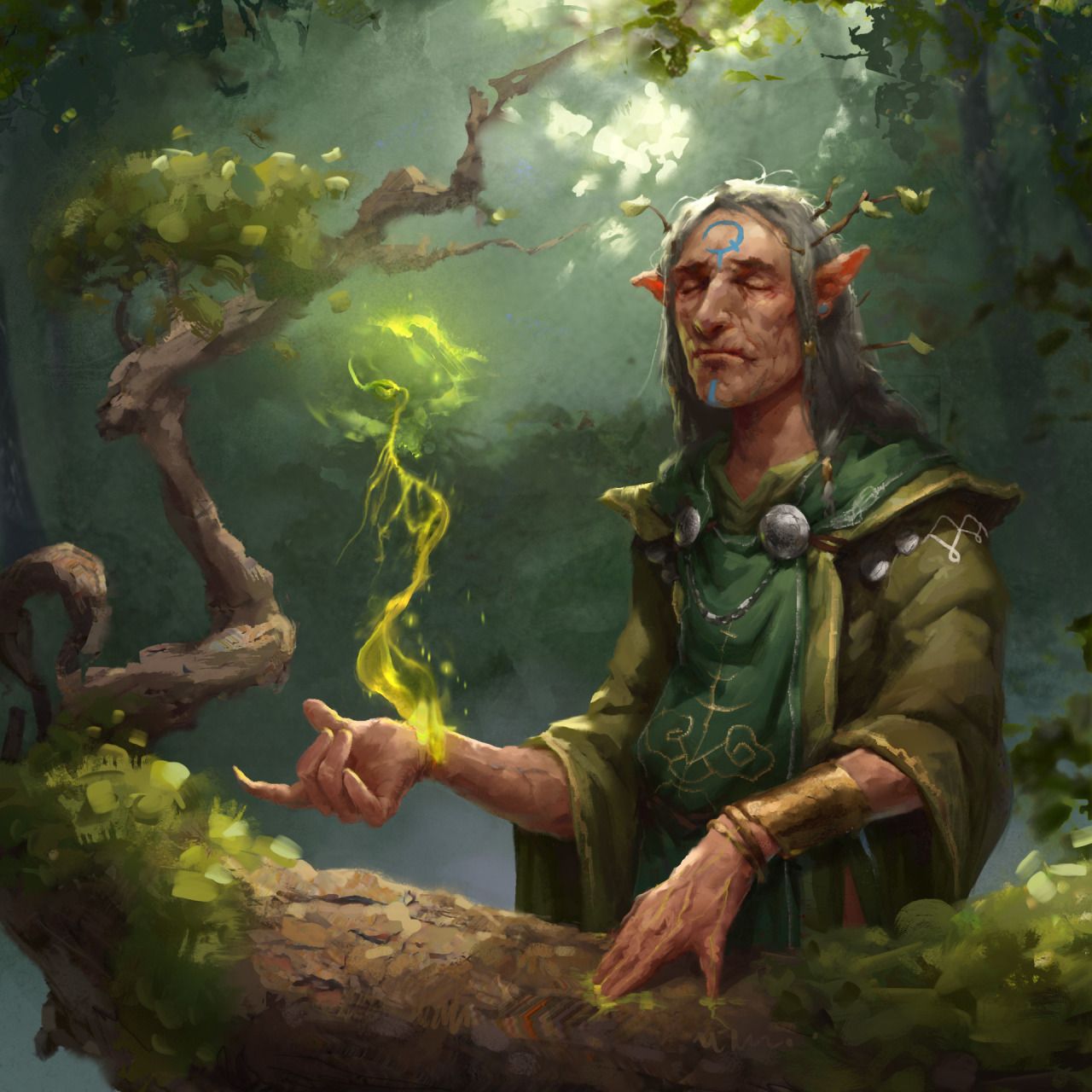Druid Sage Abilities, Studies & Fields
Below can be found a list of the knowledge fields and studies available to the Druid Class. Starting at 1st level, the druid gains one field, and one study within that field. This choice is left entirely to the player. There are four fields to choose from:
- Animal Life: provides familiarity with living, breathing creatures of natural, non-magical origin, their lifestyles and instincts, and the ecologies in which they dwell. The field is divided into different animal forms.
- Earth & Sky: the study of the physical world collectively, including landscape, features and products of the earth, reaching to all natural forms of the material universe. The field is divided among the natural sciences.
- Plant Life: provides familiarity with growing plants, fungus and like growing creatures of natural, non-magical origin, their distribution, cultivation and manner of fertility. The field is divided into different plant forms.
The studies within these fields are each described more thoroughly on their own pages — and in turn are a number of sage abilities that await possession by player characters and others. Following are a list of studies sorted by their field.
Animal Life
- Amphibians & Reptiles: the study of scaly, four-legged, cold-blooded egg-laying animals, including both creatures who spend part of their lives in water and those who are born and live all their lives on land.
- Birds: the study of feathered, winged, two-legged, warm-blooded egg-laying animals, characterized by a beak with no teeth and a lightweight skeleton.
- Bugs & Spiders: the study of multi-legged, exoskeletal insects, characterized by antennae, pincers, stingers, wings and a wide variety of other features.
- Golems: the art of bestowing life into creature-appearing constructs designed from homogenous natural materials, typically flesh, stone, clay, wood, metal and cloth, leavened dough or plant root.
- Mammals: the study of warm blooded, hairy animals with four limbs gestated through live birth, with a wide variety of features. The knowledge includes humanoid forms to some degree.
- Sea Life: the study of marine creatures and animals dwelling in both salt and freshwater environments, characterized by their ability to swim and breathe underwater.
- Slime Moulds: the study of jellies, metamorphs, moulds, oozes, puddings and slimes, enabling the character to explain the behaviour and dangers of these creatures.
Earth & Sky
- Alchemy: the study of natural materials, plants and elemental phenomena, surrounding the creation and refinement of substances, poisons, salves, ointments, potions and more.
- Animal Physiology: a study of veterinary medicine, providing for the restoration and healing of animals, and to some degree of persons and humanoids.
- Geography: provides knowledge of terrain, political boundaries, travel routes, the location of cities and cultural ethnic groups, as defined by land and sea.
- Geology: provides knowledge of the earth, the rocks with which it is composed and the processes by which terrestrial structures and forms change over time.
- Natural Astronomy: a study of the sky and the movement of bodies, wholly separate from the mystical interpretations that might appear in other similarly named studies.
- Oceanography: the study and practices surrounding bodies of water, including lakes, inland seas, bays an oceans, with knowledge of physical phenomena related to these watery environments.
Plant Life
- Bushes & Shrubs: the study of small-to-medium sized woody plants, the majority of which are under 20 feet in height and are more commonly less. Provides knowledge of fruit, perfume, gums, incense, medicinal drugs and many other products.
- Flowers & Sprigs: the study of blooms and blossoms of small plants, as well as vines, stalks, crowns and root masses, their contribution to plant health, beauty and their relationship with certain insects.
- Fungi: the study of fleshy and edible fruit bodies of fungus, yeasts, lichen, moulds and spores, including those that grow above and below ground. Yields knowledge of some sentient forms.
- Grasses & Grains: the study of herbaceous plants, including "true" grasses, sedges and rushes, notably cereals, bamboo and cattails. Includes details about the preparation of staple foods from these plants.
- Mosses & Ferns: the study of plants that grow in dense clumps and mats in damp, shady and subterranean conditions, many of which feature prominently in medicine and magic.
- Trees: the study of large perennials with an enlongated stem, or trunk, supporting branches and leaves of the deciduous, broadleaf and coniferous varieties, as well as the cultivation of these plants.
Awarding Knowledge Points
At 1st level, the druid player character will gain 12 knowledge points in their chosen study. A d6-1 is rolled for the other studies in the druid's chosen field, producing a result of 0 to 5 each. A d4-1 is rolled for all other studies in all other fields, producing a result of 0 to 3 each. Therefore, the druid will accumulate sufficient points in every study to most likely become an amateur in all or most studies. Be sure to read the sage abilities page for additional details.
This accumulation is assumed to occur steadily, through everyday discussions with NPCs in settled places, chance reading of books, experiment and insight, whether or not the character ever expresses their intention to gather this knowledge. Time in the campaign is often skirted over ... so we may assume the character spoke to someone in their profession along a road, at a tavern, perhaps finding a shelf of books (and poking through them) during an afternoon's shopping or whenever.
Once the character has gained sufficient levels, the number of both fields and studies are increased. Furthermore, as levels are gained, so are knowledge points, enabling characters to progress from amateur to authority, and thence to expert and sage. At 5th, 9th and 13th levels, the druid will gain a new study in a field that the druid possesses. At 7th and 13th levels, the druid will gain a new field.
